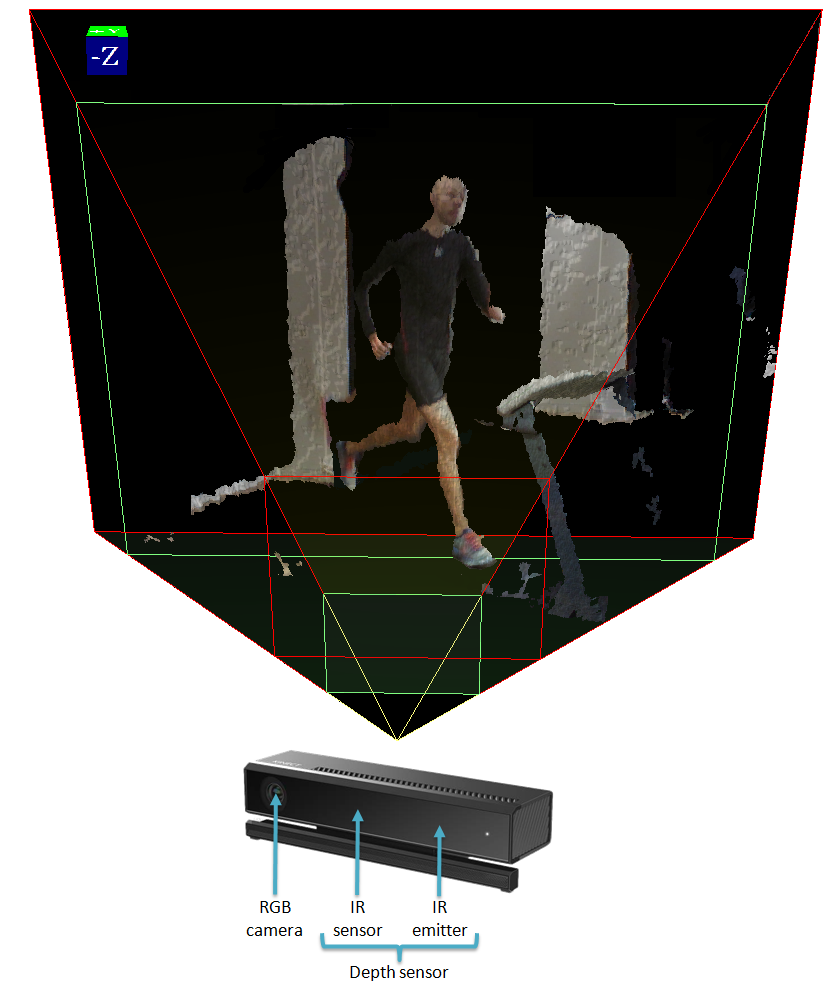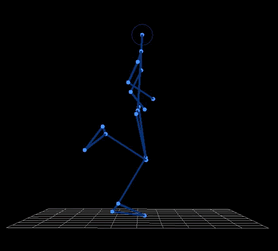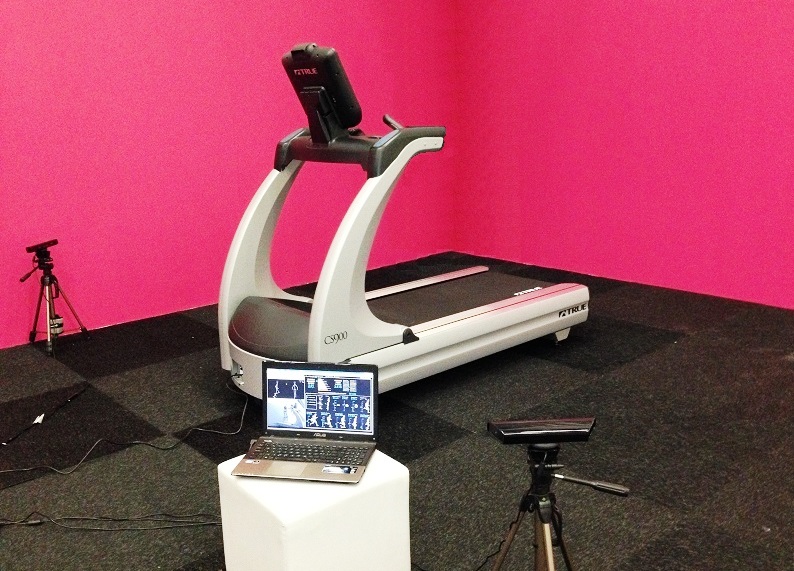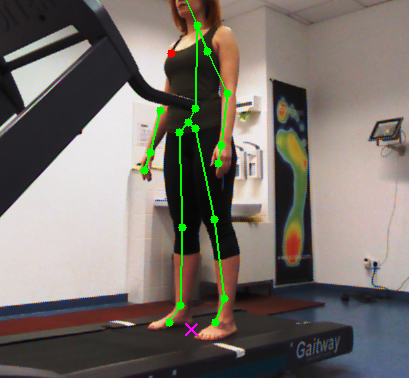Markerless Motion Capture
A depth sensitive camera is like an ordinary digital camera but each pixel also contains information about the distance to the object. Therefore, you can digitally reconstruct any object or scene in 3D, quickly and with millimeter precision. We use these cameras to capture running motion.
In contrast to traditional motion capture systems, depth cameras do not rely on physical body markers. Instead, they use a pattern of near-infrared light to perceive depth. In a way, one can say that a depth camera generates its own body markers made of light. Therefore, no special suits or body stickers need to be worn which makes running analysis with MotionMetrix very fast and easy. You just need to step on the treadmill and run and that’s it.
Most depth cameras have built-in motion tracking functionality and it works well for general purpose applications where precision and speed is less crucial. For running, however, the built-in tracking is simply not adequate. This is why MotionMetrix uses its own algorithms for 3D reconstruction and recognition of individual body segments so that the running motion can be described with the highest possible accuracy.
How accurate you may ask? Well, sufficiently accurate to compete with world-leading marker-based solutions.

“I was very impressed that everything just worked. I was convinced that my size 49 shoes or some other outline of my body would make the whole thing go bananas. But no, the sensors locked on my body and a moment later a nice animation of my running stride showed up on the screen.”
David
Triathlete

Biomechanical assessment
In our opinion, the true strength with MotionMetrix is neither in the innovative idea of using depth cameras to collect running motion data nor the unique body segment detection algorithms of unparalleled quality. It is when the 3D segmental model of the runner has been established that we finally can get down to what we do best – make sense out of your running mechanics. We look at three biomechanical categories:
- Running economy and stride performance
- Gait symmetry
- Joint loading
All categories rely on rigorous kinematic and kinetic calculations to extract the angles, forces, timing parameters and everything else that matters for a complete running mechanics assessment. Before, you needed to visit a fully equipped biomechanics lab and spend a day to get the same parameters. With MotionMetrix you get it in minutes, all in one tool. It’s your own biomechanics lab. If you don’t consider yourself an expert biomechanics, no problem. MotionMetrix helps you interpret the parameters and guides you in your assessment. To find out more about what you can get out from MotionMetrix, visit the Products section.
Measurement setup
This is what you need to get started with MotionMetrix:
- Two Kinect cameras, wall mounted or on floor stands
- A Windows computer with the MotionMetrix© software
- A treadmill (not included)
- Room space: 3 x 4 square meters or more
MotionMetrix can be installed permanently or be used as a portable tool. No more than 15 minutes is required to set up a ready-to-run portable solution. So for those of you who don’t have your own clinic or treadmill, you can still work with MotionMetrix. The whole system fits into a hand luggage and can easily be transported.
The test consists of a 30 seconds run on a treadmill at any speed between 9 – 20 km/h. As soon as you step on the treadmill, the depth cameras automatically start tracking your body segments. Measurement capacity is up to 20 runners in one hour which makes MotionMetrix suitable also for larger groups.



Validation
When introducing a new technology, it is essential to demonstrate that it fulfils its intended purpose. Best practice is to do this by third party validation. We have successfully validated all the relevant parameters used in MotionMetrix at different independent institutes using standardized reference equipment, for instance
- Position, angles and stride parameters against Qualisys Oqus 4 marker-based motion capture system
- Forces and temporal parameters against Kistler Gaitway system
- Running economy against VO2 using Oxycon Pro
For more information about validation tests, contact us.

